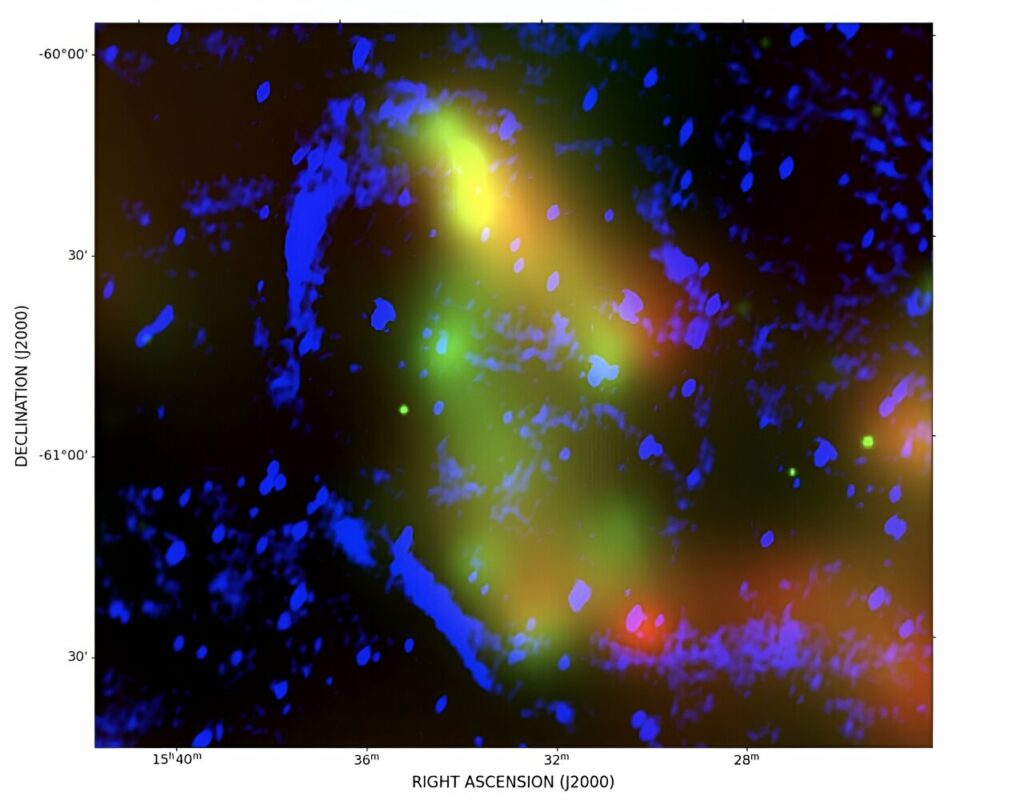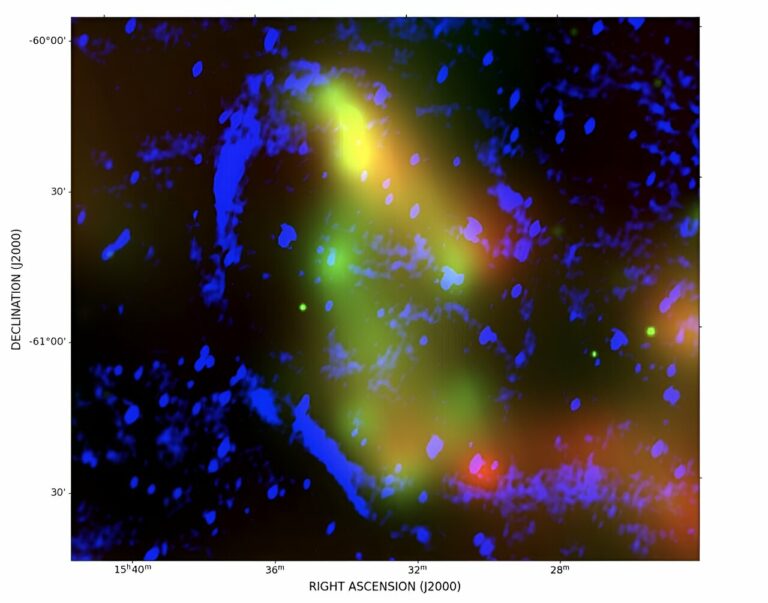Astronomers Make a New Supernova Remnant Discovery
A recent discovery by astronomers from Curtin University in Australia and other institutions has revealed the presence of a new supernova remnant (SNR) located approximately 3,300 light years away. This newly found SNR, named G321.3-3.9, possesses an elliptical shape and is estimated to be several thousand years old. The details of this finding were published on January 30 in a paper available on the pre-print server arXiv.
Supernova remnants (SNRs) are expansive structures that form as a result of a supernova explosion. They consist of material that has been ejected from the explosion, as well as interstellar material that has been gathered by the shockwave produced by the exploded star.
The study of supernova remnants is of great significance to astronomers, as they play a crucial role in the evolution of galaxies. They disperse the heavy elements created during the supernova explosion and provide the necessary energy to heat up the interstellar medium. Additionally, SNRs are believed to be responsible for the acceleration of galactic cosmic rays.
The extended source G321.3-3.9 was initially identified as a potential SNR candidate back in 1997. Previous observations have revealed that it possesses an elliptical shape and is nearly a complete shell, measuring 109×64 arcmin2 in size. It has a peak flux of 10 mJy/beam and a total integrated flux density greater than 0.37 Jy.
A team of astronomers, led by Silvia Mantovanini from Curtin University, has now conducted a comprehensive analysis of radio and X-ray data obtained from various surveys, as well as data from the Spektr-RG spacecraft. This analysis has confirmed the SNR status of G321.3-3.9.
According to the study, G321.3-3.9 exhibits an extended structure at low X-ray energies, surrounded by a radio shell. Interestingly, no diffuse emission in the infrared range was observed. The spectral index of the source was measured to be -0.8, which aligns with non-thermal synchrotron emission, consistent with a shell-type SNR.

According to the data collected, G321.3-3.9 is estimated to be situated at a distance ranging from 2,300 to 3,300 light years. The distance estimations indicate that the SNR has a diameter of approximately 62–97 light years and an age between 1,700 and 4,000 years. Consequently, the assumed age is younger than what is anticipated based on the shape of the shell and its low brightness in radio frequencies.
The astronomers highlight that these uncertainties arise from the limited photon statistics in X-rays and the absence of a connection between the shell and a known pulsar. They further mention that none of the pulsars in the same vicinity exhibit an age or proper motion that could be linked to a supernova remnant of the size of G321.3-3.9.
“To investigate a potential association with a pulsar, we will conduct follow-up observations using the PARKES telescope within the remnant shell in the radio frequency range. If we successfully detect pulsations, we will be able to calculate the dispersion measure, which in turn will provide us with the age, distance, and expansion velocity of G321.3-3.9,” explained the scientists.
This article is republished from PhysORG under a Creative Commons license. Read the original article.
Do not forget to share your opinion with us to provide you with the best posts !




0 Comments